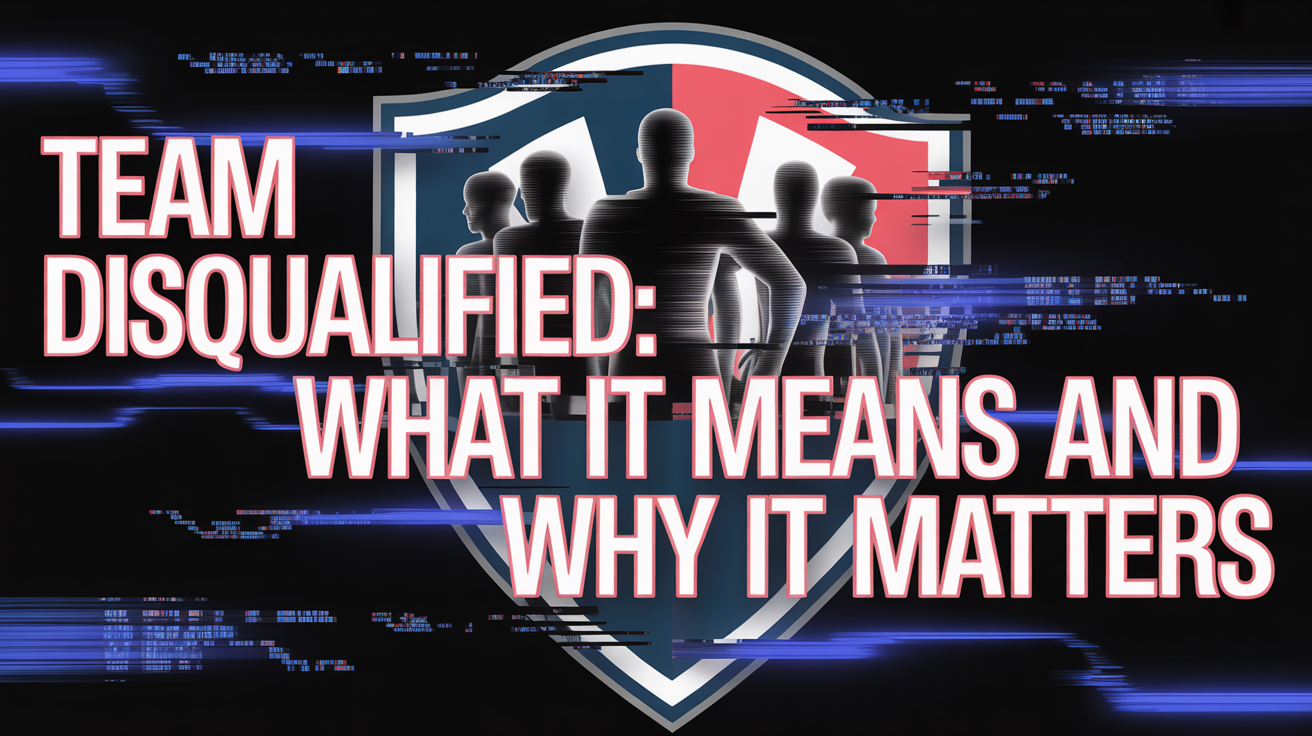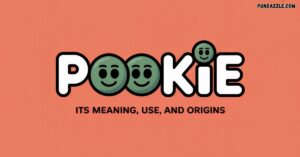In today’s rapidly evolving workplaces, the concept of a disquantified team is gaining traction.
This approach prioritizes qualitative metrics over traditional quantitative measures, reshaping how teams operate and succeed.
In this article, we’ll explore the meaning of disquantification, its benefits, challenges, and practical strategies for implementation.
Understanding Disquantification
Definition of Disquantification
At its core, disquantification refers to the shift away from relying solely on numerical metrics to evaluate team performance.
Instead of focusing solely on numbers like sales figures or productivity rates this model emphasizes qualitative assessments that capture the nuances of teamwork.
It values aspects like collaboration, creativity, and employee satisfaction, which can greatly influence overall performance.
Historical Context
The evolution of team evaluation methods has seen a significant shift over the years. Traditionally, organizations leaned heavily on Key Performance Indicators (KPIs) and quantitative data.
However, as workplaces modernized, leaders began to recognize the limitations of these metrics.
The rise of the human-centric work model has prompted a move towards more holistic evaluations that consider the emotional and social dynamics within teams.
The Limitations of Traditional Metrics
Why Numbers Alone Fall Short
While numbers can provide a snapshot of performance, they often fail to tell the full story.
For instance, a team that meets its sales targets may appear successful on paper, but underlying issues like poor morale or lack of collaboration can undermine long-term success.
Relying solely on quantitative metrics can lead to a narrow understanding of team health.
Impact on Morale and Creativity
A focus on numbers can stifle creativity and discourage innovation. When teams feel pressured to meet specific targets, they may prioritize short-term gains over exploration and experimentation.
This not only affects team dynamics but can also lead to burnout and decreased job satisfaction.
In contrast, a disquantified approach fosters an environment where team members feel empowered to share ideas without the fear of being judged by numbers.
Also Read: Exchange FTAs In Asia Trading: How Free Trade Agreements Work
Benefits of a Disquantified Team
Enhanced Collaboration
A disquantified team model encourages open communication and collaboration. By focusing on qualitative feedback, team members can engage in meaningful discussions about their work.
This collaborative environment often leads to innovative solutions and improved problem-solving capabilities.
Greater Employee Satisfaction
When organizations prioritize qualitative metrics, employees feel more valued and engaged. According to a study by Gallup, organizations that focus on employee engagement see a 21% increase in profitability.
By fostering a culture of trust and transparency, disquantified teams can significantly boost employee satisfaction and retention rates.
Increased Adaptability
In a fast-paced business landscape, adaptability is crucial. Disquantified teams are better equipped to respond to changes because they emphasize flexible thinking and creative problem-solving.
This adaptability not only enhances team resilience but also positions organizations to thrive in uncertain environments.
Building a Disquantified Team
Key Principles to Follow
To successfully transition to a disquantified model, organizations should adhere to some foundational principles:
- Trust Building: Establishing a culture of trust is essential. Team members should feel safe to express their thoughts and ideas without fear of judgment.
- Transparent Leadership: Leaders must model transparency in their decision-making processes. Open communication fosters a sense of belonging and encourages team members to share their insights.
- Focus on Qualitative Metrics: Prioritize qualitative assessments, such as peer reviews and self-assessments, to gauge team performance.
Strategies for Implementation
Implementing a disquantified approach requires strategic planning. Here are some actionable steps:
- Training Sessions: Conduct workshops that educate team members about the benefits of disquantification and how to provide effective qualitative feedback.
- Feedback Systems: Establish robust feedback loops that encourage ongoing communication. This could include regular check-ins or anonymous surveys to gauge team sentiments.
- Pilot Programs: Start with a small team to test the disquantified model before rolling it out organization-wide. This allows for adjustments based on real-world experiences.
Also Read: Office Avstarnews: The Ultimate Solution For Office Management
Fostering a Culture of Trust
Cultivating a culture of trust is paramount in a disquantified team. Here are some ways to foster that culture:
- Encourage Open Communication: Create channels for team members to voice their opinions and concerns. Regular team meetings can facilitate this dialogue.
- Recognize Contributions: Acknowledge individual and team achievements, no matter how small. Celebrating successes reinforces a positive atmosphere.
- Promote Psychological Safety: Ensure that team members feel comfortable taking risks and making mistakes. This safety net encourages innovation and exploration.
Challenges of a Disquantified Team
Resistance to Change
Transitioning to a disquantified model often faces resistance. Team members accustomed to traditional metrics may be skeptical about the efficacy of qualitative assessments. To address this, leaders should:
- Clearly communicate the benefits of disquantification.
- Share success stories from other organizations, such as Zappos and Buffer, which have embraced this model to enhance employee satisfaction and collaboration.
Measuring Success
Determining success in a disquantified environment can be challenging. Traditional metrics may still hold some value, but balancing qualitative and quantitative insights is essential. Consider these approaches:
- Holistic Evaluation: Use a combination of qualitative feedback and select quantitative metrics to create a well-rounded picture of team performance.
- Employee Engagement Metrics: Regularly assess employee satisfaction through surveys and feedback sessions, focusing on their experiences rather than just numbers.
Real-Life Examples of Disquantified Teams
Case Studies
Organizations like Zappos and Buffer exemplify successful disquantified team models.
- Zappos: This online shoe retailer emphasizes employee happiness and culture over strict KPIs. They implement peer reviews and focus on creating a supportive work environment, which has led to high employee satisfaction and low turnover rates.
- Buffer: Known for its transparency, Buffer shares employee salaries and encourages open discussions about team performance. This approach fosters trust and enhances collaboration, leading to innovative solutions and employee well-being.
Lessons Learned
From these case studies, several key lessons emerge:
- Prioritize People: Organizations that place people at the center of their strategies tend to see better outcomes.
- Embrace Flexibility: Disquantified teams thrive in environments that allow for adaptability and creativity.
- Invest in Continuous Improvement: Regularly seek feedback and iterate on processes to ensure that the disquantified model remains effective.
Also Read: By Chef Gotxen Godolix: Tradition Meets Innovation In Culinary Excellence
The Future of Disquantified Teams
Trends and Predictions
As workplaces continue to evolve, the disquantified model is likely to gain further traction.
Predictions suggest that organizations will increasingly prioritize employee well-being and mental health, leading to more human-centric performance evaluations.
This trend aligns with the growing recognition of the importance of employee engagement and satisfaction in driving organizational success.
Potential Impact on Workplace Culture
The shift towards disquantification could fundamentally reshape workplace culture. Here are some anticipated changes:
- Increased Collaboration: Teams will likely become more collaborative as they focus on shared goals rather than individual metrics.
- Enhanced Creativity: A greater emphasis on qualitative feedback will encourage innovative thinking and creative problem-solving.
- Stronger Employee Engagement: Organizations that adopt a disquantified approach may see higher levels of employee satisfaction and loyalty.
Tips for Leaders Transitioning to a Disquantified Model
Practical Advice
Leading a transition to a disquantified team model requires thoughtful planning. Here are some practical tips:
- Communicate Openly: Keep team members informed about the transition process and its benefits. Transparency builds trust.
- Provide Training: Equip leaders and team members with the skills needed to give and receive qualitative feedback effectively.
- Set Realistic Expectations: Understand that the transition will take time. Be patient and allow for adjustments along the way.
Also Read: Revolutionizing Business Growth: The Pedrovazpaulo Marketing Consulting Advantage
Encouraging Feedback and Iteration
Fostering a feedback-driven culture is essential for success. Here’s how to encourage continuous improvement:
- Regular Check-Ins: Schedule frequent one-on-one meetings to discuss progress and gather input.
- Anonymous Surveys: Implement regular anonymous surveys to collect honest feedback on team dynamics and performance.
- Iterative Processes: Use feedback to make iterative improvements to team practices and processes.
Conclusion
The concept of a disquantified team offers a refreshing perspective on performance evaluation.
By prioritizing qualitative metrics and fostering a culture of trust, organizations can enhance collaboration, employee satisfaction, and adaptability.
As workplaces evolve, embracing this model may not only lead to better outcomes but also create a more engaging and supportive work environment.
Transitioning to a disquantified approach requires commitment, patience, and open communication, but the potential benefits make it a worthwhile endeavor.
As we look to the future, it’s clear that organizations must adapt to the changing landscape of teamwork.
Embracing disquantification may very well be the key to thriving in this new era.
Read more knowledgeable blogs on Pun Dazzle

Philipp Engel is a passionate writer and pun lover dedicated to spreading laughter and joy through words. As the creator and author of the website Philipp Engel, he delivers a delightful mix of puns, jokes, and playful humor that entertains readers of all ages. With a sharp wit and a deep love for language, Philipp aims to brighten every visitor’s day with clever wordplay and a smile, making humor a universal language that connects people everywhere.








